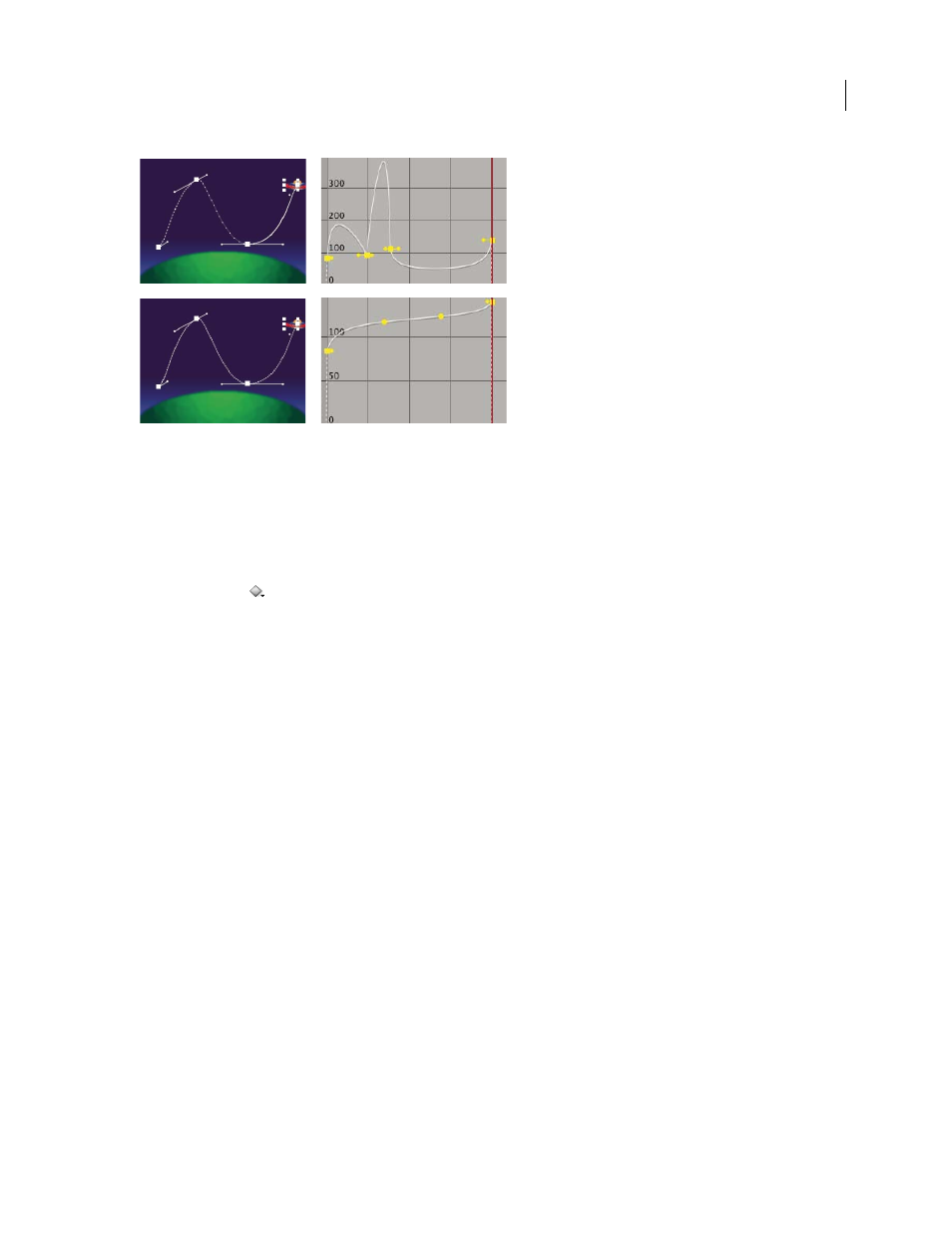Revert to a nonroving keyframe, Automatically ease speed – Adobe After Effects CS3 User Manual
Page 222

AFTER EFFECTS CS3
User Guide
217
The original motion path (top) shows different velocities between keyframes. After the keyframes are set to rove (bottom), the motion path
shows consistent speed over the range of keyframes.
1
In layer bar mode or in the Graph Editor, set up the keyframes for the motion you want to smooth.
2
Determine the beginning and ending keyframes for the range you want to smooth.
3
Do one of the following:
•
For every keyframe in the range (except the beginning and ending keyframes), select Rove Across Time in the
keyframe menu
.
•
Select the keyframes you want to rove and choose Animation > Keyframe Interpolation. Then choose Rove Across
Time from the Roving menu.
The intermediate keyframes adjust their positions on the timeline to smooth the speed curve between the beginning
and ending keyframes.
Revert to a nonroving keyframe
•
Select the roving keyframe option from the keyframe menu, or drag the roving keyframe left or right.
•
Select the keyframes you want to change, and choose Animation > Keyframe Interpolation. Then choose Lock To
Time from the Roving menu.
Automatically ease speed
Although you can manually adjust the speed of a keyframe by dragging direction handles, using Easy Ease automates
the work.
After you apply Easy Ease, each keyframe has a speed of 0 with an influence of 33.33% on either side. When you ease
the speed of an object, for example, the object slows down as it approaches a keyframe, and gradually accelerates as
it leaves. You can ease speed when coming into or out of a keyframe, or both.
1
In the Graph Editor or in layer bar mode, select a range of keyframes.
2
Do one of the following:
•
Choose Animation > Keyframe Assistant > Easy Ease (to ease speed coming both into and out of selected
keyframes), Easy Ease In (to ease speed coming into selected keyframes), or Easy Ease Out (to ease speed coming
out of selected keyframes).
